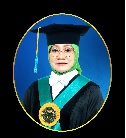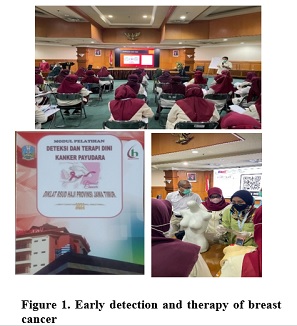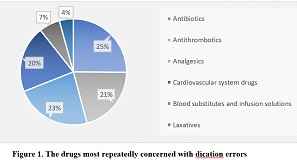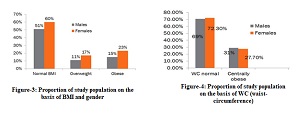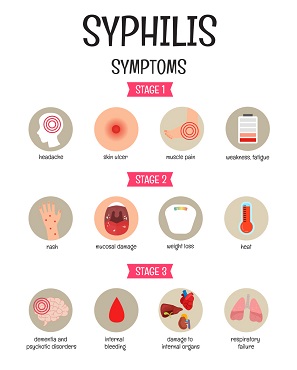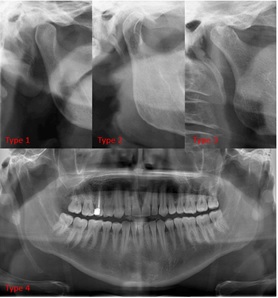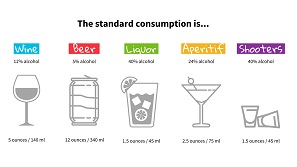Degree of Hearing Loss and Students' Quality of Life at a State-Owned Extraordinary School in Jember Indonesia

Hearing loss is one of the health problems that can be caused by genetic factors, anatomical abnormalities, trauma to the ears and head, ototoxic drugs, and bacterial meningitis. People with hearing loss may have physical, intellectual, and mental limitations that can hinder daily activities and affect quality of life. Extraordinary School (Sekolah Luar Biasa/SLB) is the school that serves school-age children with special needs or those having a physical or/ mental disorder. This study aimed to determine the relationship between the degree of hearing loss and the quality of life of students with hearing disabilities at SLB Negeri Jember, Indonesia. This study used an analytic observational research design. The total number of samples in this study was 23 students who met the inclusion and exclusion criteria, then an audiometer examination and a questionnaire survey were carried out. This study used the Pediatric Quality of Life Inventory (PEDS-QLTM) questionnaire. The statistical test used was the Spearman correlation test. Interpretation of the results was considered to have a significant correlation if the p-value <0.05. The result of statistical analysis using Spearman's rank shows the relationship between the degree of hearing loss and the physical function of students with hearing loss at the SLB Negeri Jember shows a significance value of 0.184. The relationship between the degree of hearing loss and emotional function obtained a result of 0.005. The relationship between the degree of hearing loss and social functioning shows a significance value of 0.561. The relationship between the degree of hearing loss and school functioning showed a significance value of 0.016. The results were considered to have a significant correlation if the p-value <0.05. In conclusion, hearing loss was found not to have significant relationship with physical and social functioning in students with hearing disabilities at SLB Negeri Jember, Indonesia
INTRODUCTION
There were an estimated 466 million people with hearing loss in 2019 according to the World Health Organization (WHO), of which 34 million were children. Deaf people in Southeast Asia account for about 180 million people. One in ten people in the world by 2050 or more than 900 million people are expected to suffer from hearing loss11. Based on data collected by the Basic Health Research (Riskesdas) in 2018, people with hearing disabilities from birth in children aged 24-59 months in Indonesia were 0.11%22. According to data from the Ministry of Social Affairs' Management Information System (SIMPD) published in 2019, 7.03% suffered from hearing disability among all people with disabilities in Indonesia33. Extraordinary School (Sekolah Luar Biasa/SLB) is a school that serves school-age children with special needs or those who have a physical or/ mental disorder, one of them being deaf, whether it is acquired or congenital4,545.
The etiology of hearing loss in children can be congenital genetic (80%) and non-genetic (20%). Genetic hearing loss can be further classified as syndromic and non-syndromic. Syndromic hearing loss can be caused by diseases such as Waardenburg syndrome, Usher syndrome, and Pendred syndrome. Non-syndromic genetic hearing loss can result from autosomal dominant, recessive, or sex-linked mutations.Syndromic genetic hearing loss accounts for about 20% and non-syndromic genetic hearing loss is the most common cause of congenital hearing loss at about 80%. Non-genetic hearing loss can be caused by TORCH (toxoplasma, rubella, cytomegalovirus, and herpes) which are infectious agents acquired in the prenatalphase, and bacteria such asNeisseria meningitidisandStreptococcus pneumoniaacquired in the postnatalphase. Abnormalities in the inner ear will affect the function of the transduction organ in the cochlea, resulting in damage to hair cells which is then called sensorineural deafness6-8.678
More severe degree of hearing loss is known to worsen the quality of life of individuals. As compared to normal hearing children, children with hearing loss were found to have lower scores in global general health, including emotional, physical, behavioral, and mental health, as well as family activity and cohesion, parental time, self-care, mobility, and social function9-1191011.
Hearing-impaired children who do not receive early intervention and rehabilitation will fall behind their normal-hearing peers in reading skills, cognition, and socio-emotional development. This gap might in turn result in modest educational achievements and employment levels in adulthood12-14121314.
MATERIALS AND METHODS
This study used an observational analytic design with a cross-sectionalapproach. The data obtained in this study were taken from January 4thto February 4th, 2023. The research was conducted at SLB Negeri Jember, Indonesia. The sample in this study was 23 students with hearing disabilities of SLB Negeri Jember who met the inclusion and exclusion criteria. The inclusion criteria included an active student at SLB Negeri Jember, aged 10-18 years old, the children and their parents/guardians were willing to be included in the study by filling out informed consentand willing to become respondents, and the students are suffering from hearing loss as evidenced by audiometry results. The exclusion criteria in this study were as follows: Students who use hearing aids and students with other disabilities. This study was approved by the Ethical Review Board of the Medical Faculty of Jember University with registration number 1667/H25.1.11/KE/2022. This study adhered to STROBE guidelines for reporting observational studies (https://www.strobe-statement.org/)1515.
RESULTS
The description of the sample characteristics in this study is classified based on gender, age, type of hearing loss, and the location of the ear that experiences hearing loss which can be seen in table 1.
Sample characteristics | Number (n) | Percentage (%) |
| Gender | ||
Male | 10 | 43 |
Female | 13 | 57 |
| Age | ||
10 - 12 years | 6 | 26 |
13 - 15 years | 3 | 13 |
| 16 - 18 years | 14 | 61 |
| Hearing Impairment | ||
Right | 0 | 0 |
Left | 0 | 0 |
Bilateral | 23 | 100 |
Table 1, most of the students who are suffering from hearing loss are female, consisting of 13 students (54%) compared to male (46%). Based on age, most samples were found in the age range of 16-18 years, consisting of a total of 14 students (58%). All samples were diagnosed with bilateral hearing loss. Table 2 shows the distribution of hearing loss characteristics according to the types and the degree of hearing loss.
Sample characteristics | Number (n) | Percentage (%) |
| Types of Hearing Loss | ||
| Sensorineural | 13 | 54 |
| Conductive | 6 | 25 |
| Mix | 4 | 17 |
| Degree of Hearing Loss | ||
| Light | 1 | 4 |
| Medium | 4 | 17 |
| Medium Severe | 1 | 4 |
| Severe | 1 | 4 |
| Very Severe | 16 | 67 |
Table 2 shows that 13 students (54%) under study presented with sensorineural hearing loss, whereas only 4 (17%) were those with mixed type hearing loss. Based on the degree of hearing loss most of the students had a very severe degree, which was found in 16 students (67%).
This research conducted at SLB Negeri Jember also measured the average value of four functions as the criteria to measure the quality of life of the students with hearing loss (Table 3). The four functions are physical, social, emotional, and school function. The physical and social functions were highly qualified, while the emotional and school functions were moderate.
Quality |
World Health Organization. 2023. The World Health Organization quality of life (WHOQOL) - BREF, 2012 revision. Geneva: World Health Organization.
RISKESDAS. 2019. Laporan Nasional RISKESDAS 2018. Jakarta: Kementrian Kesehatan Republik Indonesia.
Kementrian Sosial. 2019. Sistem Informasi Penyandang Disabilitas (SIMPD) tahun 2019. Jakarta: Kementrian Sosial Republik Indonesia.
Nasution F, Anggraini LY, Putri K. 2022. Pengertian Pendidikan, Sistem Pendidikan Sekolah Luar Biasa, dan Jenis-Jenis Sekolah Luar Biasa. JENFOL [Internet]. 1Sep.2022 [cited 14May2024];3(2):422-7. Available from: https://ummaspul.e-journal.id/JENFOL/article/view/5245.
Afiati DH. 2017. Pelaksanaan Bina Wicara Pada Anak Tunarungu Di SLB Negeri 2 Bantul. Undergraduate Thesis. Yogyakarta: Universitas Negeri Yogyakarta.
Adegbiji, W. A., Olajide, G. T., Olatoke, F., Olajuyin, A. O., Olubi, O., Ali, A., Eletta, P. A., & Aluko, A. A. 2018. Preschool Children Hearing Impairment: Prevalence, Diagnosis, and Management in a Developing Country. The International Tinnitus Journal, 22(1), 60-65. https://doi.org/10.5935/0946-5448.20180010.
Naylor. 2019. Hearing impairment and daily-life fatigue: a qualitative study. International Journal of Audiology. 58(7):408-416.
Iswari, Mega and Nurhastuti. 2018. Anatomy, Physiology and Genetics. In: Anatomy, Physiology and Genetics. Goresan Pena, Kuningan, pp. 1-176. ISBN 978-602-364-425-4
Anastasiadou, S., and Al Khalili, Y. 2022. Hearing Loss. In StatPearls. StatPearls Publishing.
Jiang, Z., Wang, J., Feng, Y., Sun, D., Zhang, X., Shi, H., Wang, J., Salvi, R., Wang, H., & Yin, S. (2021). Analysis of Early Biomarkers Associated With Noise-Induced Hearing Loss Among Shipyard Workers. JAMA networks open, 4(9), e2124100. https://doi.org/10.1001/jamanetworkopen.2021.24100
Jung, S. Y., S. H. Kim, and S. G. Yeo. 2019. Association of Nutritional Factors with Hearing Loss. Nutrients. 2019.
Cahyani, N. D., A. Mailasari, K. Dewi, and D. A. Ruspita. 2022. Hearing aids and the quality of life of children with hearing loss. KEMAS. 17(4):490-499.
Korver, A. M., Smith, R. J., Van Camp, G., Schleiss, M. R., Bitner-Glindzicz, M. A., Lustig, L. R., Usami, S. I., and Boudewyns, A. N. (2017). Congenital hearing loss. Nature reviews. Disease primers, 3, 16094. https://doi.org/10.1038/nrdp.2016.94
Korver, A. M., Konings, S., Dekker F. W., et al. Newborn hearing screening vs later hearing screening and developmental outcomes in children with permanent childhood hearing impairment. JAMA. 2010;304(15):1701–1708.
von Elm E, Altman DG, Egger M, Pocock SJ, Gøtzsche PC, Vandenbroucke JP; STROBE Initiative. 2008. The Strengthening the Reporting of Observational Studies in Epidemiology (STROBE) statement: guidelines for reporting observational studies. J Clin Epidemiol. 2008 Apr;61(4):344-9. doi: 10.1016/j.jclinepi.2007.11.008. PMID: 18313558.
Schober, P. Boer, C. Schwarte, L. 2018. Correlation Coefficients: Appropriate Use and Interpretation. Anesthesia & Analgesia 126(5):p 1763-1768, May 2018. | DOI: 10.1213/ANE.0000000000002864
Wibisana, N.S. Mahardika, A., Geriputri, N.N. 2022. An overview of the quality of life of children with visual impairments at the Special School for the Blind Education Foundation Mataram. 1(1): 40-42.
Nofiaturrahmah, F. 2018. Problems of deaf children and how to overcome them. 6(1): 1-15
Widiana, I.W., Rendra, N.T., Wulantari, N.W. 2019. Puzzle learning media to improve learning outcomes of grade iv students in science knowledge competencies. 2(3) 354-362
Giovani, I.G.P., Ricky, Y., 2020. Factors related to quality of life domains of students with hearing loss. 19(2): 133-140
Silvanaputri D, Utomo BSR, Marlina L, Poluan F, Falorin J, Dewi JM. 2019. Relationship Between Hearing Loss and The Quality of Life in Elderly. J Kedokt. 2019; XXXV (2):4–9.
Copyright (c) 2024 Aldy Bachtiar Hidayat

This work is licensed under a Creative Commons Attribution-ShareAlike 4.0 International License.
- The journal allows the author to hold the copyright of the article without restrictions.
- The journal allows the author(s) to retain publishing rights without restrictions.
- The legal formal aspect of journal publication accessibility refers to Creative Commons Attribution Share-Alike (CC BY-SA).
- The Creative Commons Attribution Share-Alike (CC BY-SA) license allows re-distribution and re-use of a licensed work on the conditions that the creator is appropriately credited and that any derivative work is made available under "the same, similar or a compatible license”. Other than the conditions mentioned above, the editorial board is not responsible for copyright violation.


